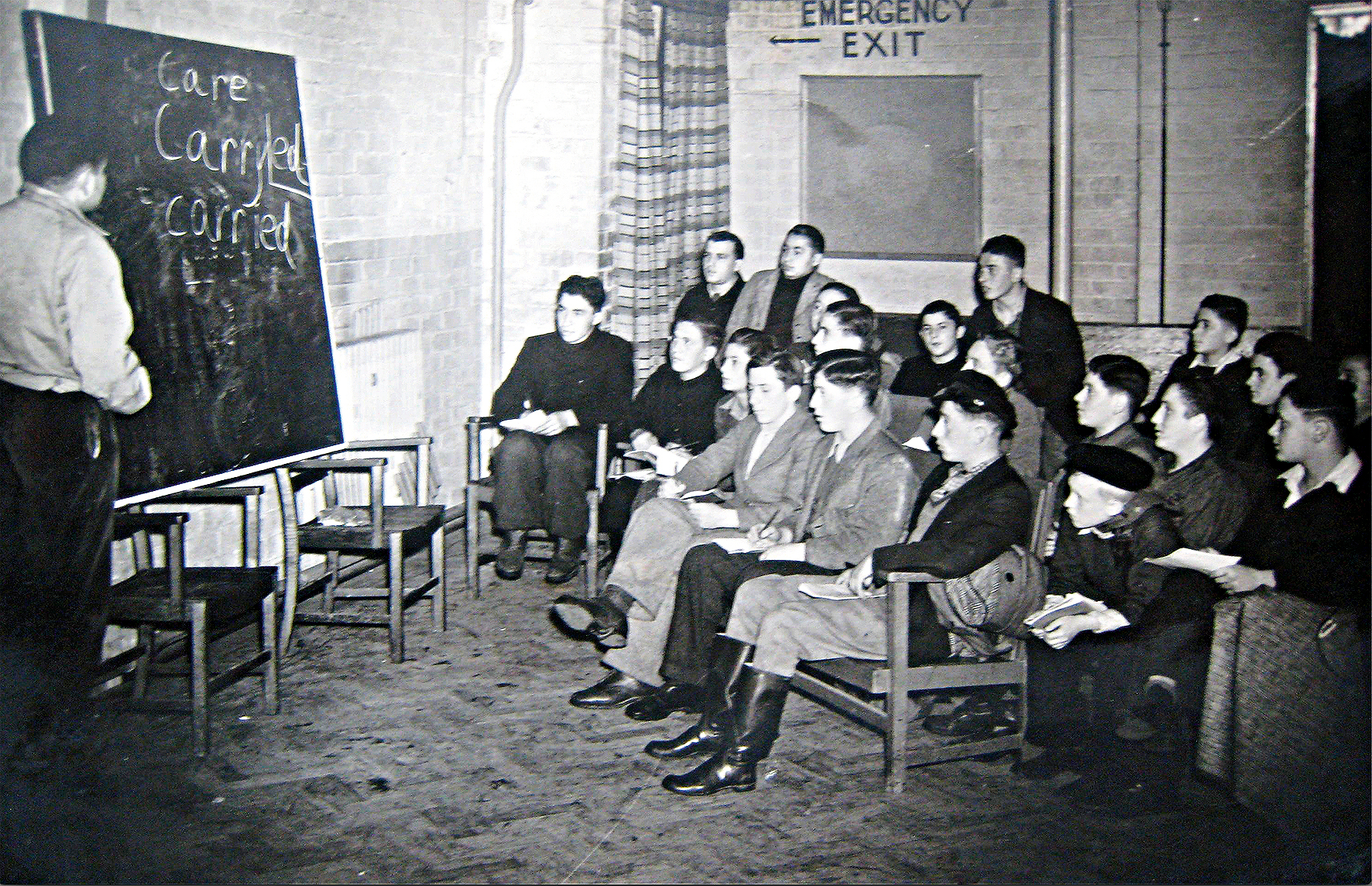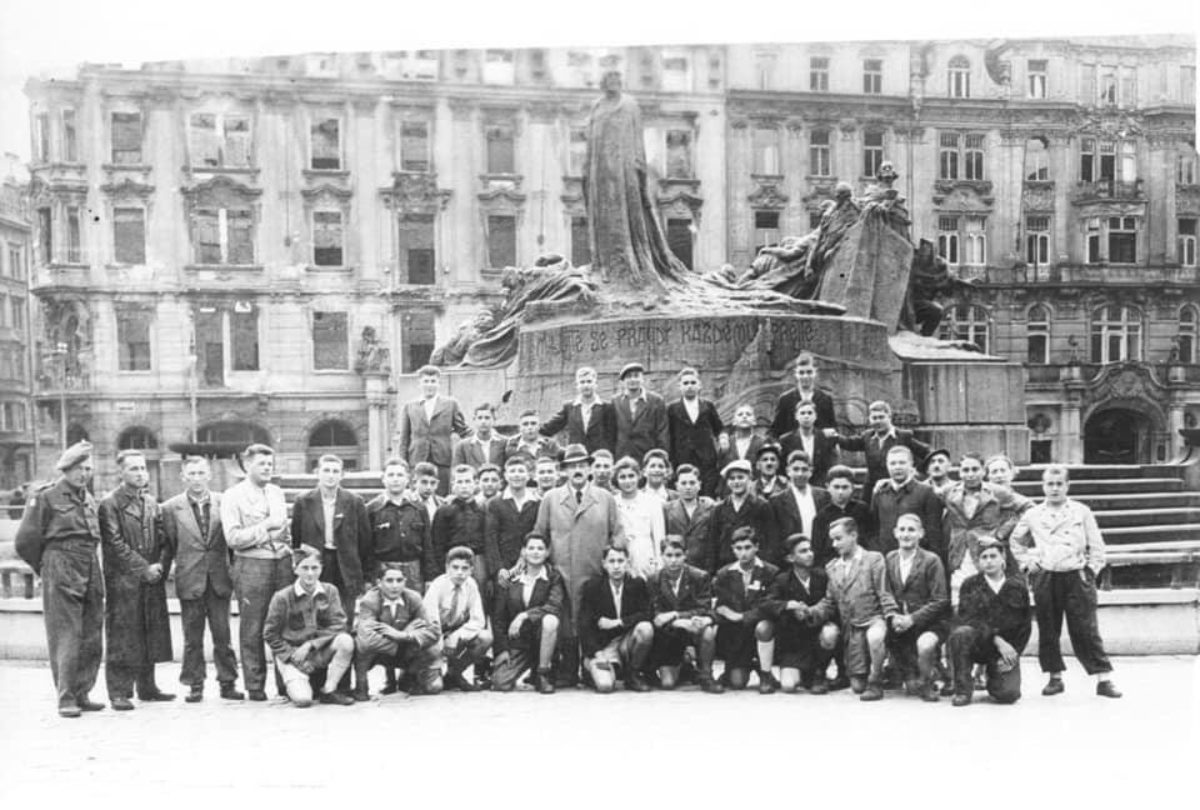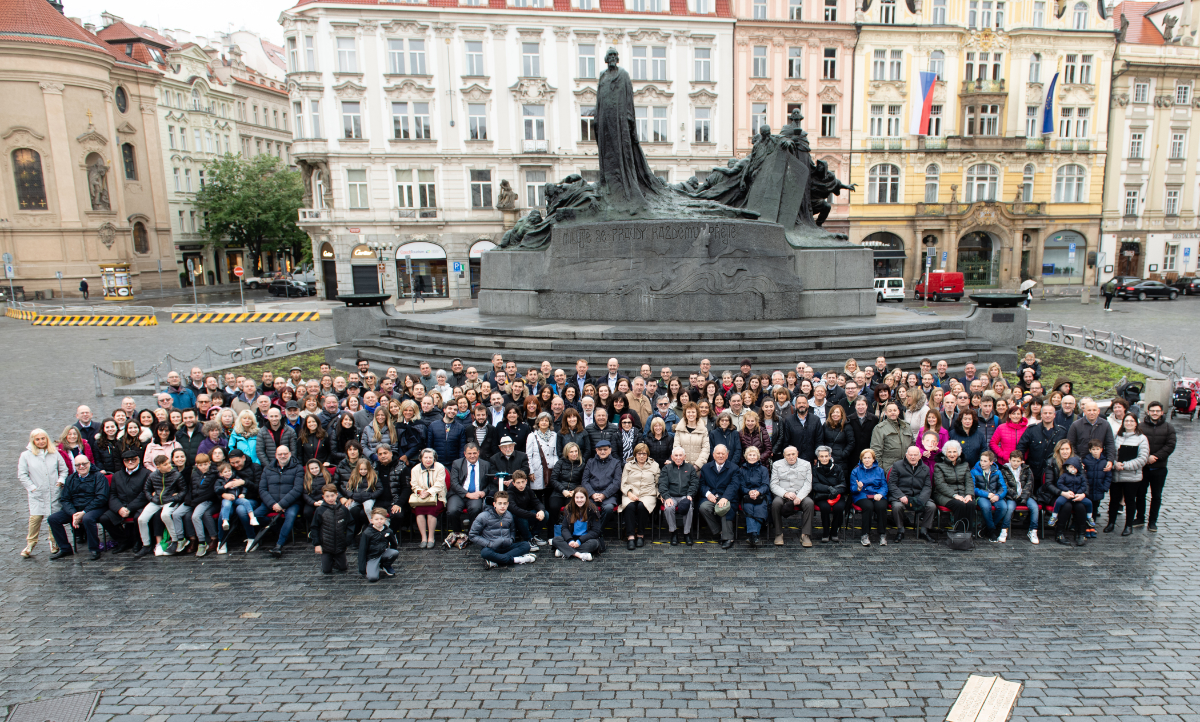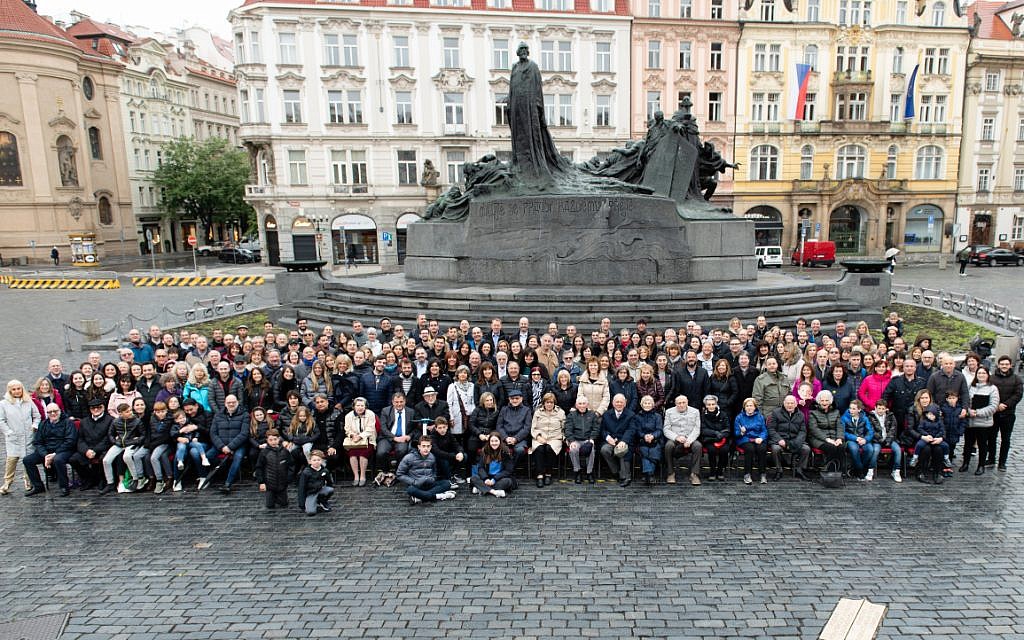Special report: Keeping alive the Boys’ legacy
After survivors were joined by family and friends in recreating a famous Prague photo from 1945, we hear why the community must be united in their memory for future generations
“Right here on this spot,” declares James, eyes shining with purpose, “is where my grandfather stood at the end of atrocity and the start of hope.”
It’s 8am on a drizzling, chilly morning but you wouldn’t know it for the air of excitement on Old Town Square in Prague. There is passion and laughter in abundance, but also sadness, as four generations of Holocaust survivors huddle in front of the Jan Hus Memorial.
“I am 19, and my grandfather Monty was just 15 when he made the trip to England. Now we are the generation who will carry on their stories and their survival,” explains James.
Get The Jewish News Daily Edition by email and never miss our top stories Free Sign Up
About 250 family members and friends have returned to the site of three famous photographs taken of young survivors in August 1945. “The Boys”, as they became known, 732 boys and girls in total, were photographed by Czech soldiers before boarding RAF Lancaster bombers to various sites in Britain.
For some, the moment is overwhelming. Tissues are hurriedly pulled out of pockets as the famous picture is recreated.

Denise Kienwald, whose mother Minia Jay was one of “The Boys”, made the trip with her daughter Sharon Wakefield. “We have to keep telling our parents’ story to keep it alive,” she explains, her voice choked with emotion. “People have to learn that you have to be tolerant and what can happen if you aren’t. “Frankly it is a miracle that we are all alive today,” adds Sharon.
Holocaust survivor Sam Laskier, 91, felt “very emotional” surrounded by his family that morning. “I remember this picture being taken in 1945 and I feel sad looking around seeing how few of us are left today. But I shall remember this moment for the rest of my life.”
Sam is one of just six “Boys” to make the trip, alongside two other Shoah survivors with intimate connections to the group. Following their arrival in the UK, the group later formed the 45 Aid Society to raise money for survivors and teach the lessons of the Holocaust.
Mala Tribich, sister of one of ‘The Boys’ Sir Ben Helfgott, explains that in the weeks building up to the weekend she had felt sadness thinking of the many survivors “who weren’t alive to see the reunion.” But, she insists, her mood changed that morning.
Surrounded by 16 members of his family who travelled, Ben concurs: “I felt very positive, not at all miserable. Today represented survival: the survival of the next generation and all the generations that have come since.”
That legacy is paramount to the first generation of survivors. Arek Hersh, 90, made the trip with his family, including granddaughter Liora Tamam. “Now that the photo is done we will go to Theresienstadt. It is very important to me that Liora walks in my footsteps so that she can see what the place was like.” Liora, squeezing his hand, reassures him that she “definitely feels a sense of responsibility to keep the legacy alive… “When I’m home, I will tell people grandpa’s story and the many other stories I’ve heard this weekend.”

Dr Jan Roubinek, director of the Theresienstadt memorial, greets the survivors upon their arrival. A memorial service begins outside the crematorium in which, he explains, more than 30,000 Jewish victims perished from autumn 1942 until 1945.
During the ceremony, Angela Cohen, chairman of the 45 Aid Society, summarised the purpose of the trip: “We stand here today as a community united in memory in respect and love. From every corner of the world we’ve come together to stand on this ground where our loved ones suffered together and where, at liberation, they were reborn together to a future, to family and to life. Today we stand here shoulder to shoulder with each other.”
A highlight for many is a Havdalah ceremony on Saturday evening inside the beautifully ornate Spanish Synagogue. Attendees are treated to a klezmer concert and, in a touching moment, survivor Icek Alterman, 91, dances joyfully to the uplifting Yiddish music filling the room.
Throughout the weekend, second and third generation survivors meet, sometimes for the first time, learning new details about their own parents and grandparents’ lives. For many on this once in a lifetime trip, it is the remarkable connection between ‘The Boys’ which ensures the group maintains its close, and unique, bond.
“The Boys are each other’s family, with friendships the form of which are almost impossible to replicate,” explains David Greenberg, whose father Victor Greenberg was too ill to make the trip. “In the second generation we have our own families and lives, but there is a wider bond which ensures we will always support each other.”
“We are intrinsically linked and that can’t be broken,” agrees Belinda Hochland, whose father Henry Rose, also one of The Boys, passed away nine weeks ago, and who has made the journey with her sister Sharon Landau. “If dad was still alive I think he’d be proud of us. We could say to him we’ve been and understood what happened. And that he may now rest in peace.”
Smiling at her with solidarity typical of this remarkable group, Michael Rentz, himself a second-generation survivor, offers his condolences with a sobering thought:
“Living testimony is fast becoming history: now is the time we must act.”

Thank you for helping to make Jewish News the leading source of news and opinion for the UK Jewish community. Today we're asking for your invaluable help to continue putting our community first in everything we do.
For as little as £5 a month you can help sustain the vital work we do in celebrating and standing up for Jewish life in Britain.
Jewish News holds our community together and keeps us connected. Like a synagogue, it’s where people turn to feel part of something bigger. It also proudly shows the rest of Britain the vibrancy and rich culture of modern Jewish life.
You can make a quick and easy one-off or monthly contribution of £5, £10, £20 or any other sum you’re comfortable with.
100% of your donation will help us continue celebrating our community, in all its dynamic diversity...
Engaging
Being a community platform means so much more than producing a newspaper and website. One of our proudest roles is media partnering with our invaluable charities to amplify the outstanding work they do to help us all.
Celebrating
There’s no shortage of oys in the world but Jewish News takes every opportunity to celebrate the joys too, through projects like Night of Heroes, 40 Under 40 and other compelling countdowns that make the community kvell with pride.
Pioneering
In the first collaboration between media outlets from different faiths, Jewish News worked with British Muslim TV and Church Times to produce a list of young activists leading the way on interfaith understanding.
Campaigning
Royal Mail issued a stamp honouring Holocaust hero Sir Nicholas Winton after a Jewish News campaign attracted more than 100,000 backers. Jewish Newsalso produces special editions of the paper highlighting pressing issues including mental health and Holocaust remembrance.
Easy access
In an age when news is readily accessible, Jewish News provides high-quality content free online and offline, removing any financial barriers to connecting people.
Voice of our community to wider society
The Jewish News team regularly appears on TV, radio and on the pages of the national press to comment on stories about the Jewish community. Easy access to the paper on the streets of London also means Jewish News provides an invaluable window into the community for the country at large.
We hope you agree all this is worth preserving.
-
By Laurent Vaughan - Senior Associate (Bishop & Sewell Solicitors)
-
By Laurent Vaughan - Senior Associate (Bishop & Sewell Solicitors)
-
By Laurent Vaughan - Senior Associate (Bishop & Sewell Solicitors)
-
By Laurent Vaughan - Senior Associate (Bishop & Sewell Solicitors)






















